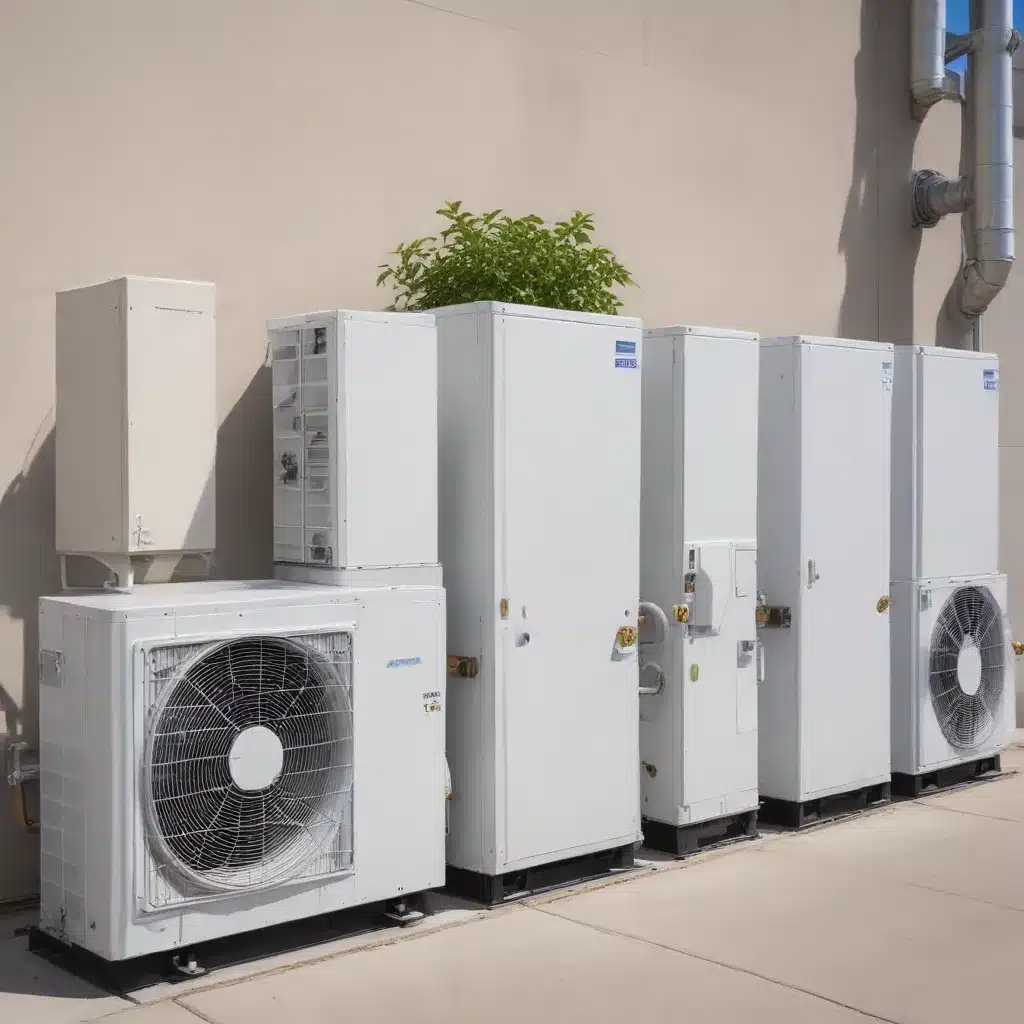
The heating, ventilation, and air conditioning (HVAC) industry faces a pivotal transition as concerns over environmental sustainability take center stage. Conventional refrigerants widely used in HVAC systems have come under intense scrutiny due to their detrimental impact on the ozone layer and contribution to global warming. To combat this, the industry is actively exploring eco-friendly refrigerant alternatives that can deliver efficient, reliable cooling while minimizing the carbon footprint.
Sustainable HVAC System Design Considerations
Environmental Impacts of Refrigerants
Historically, chlorofluorocarbons (CFCs) and hydrochlorofluorocarbons (HCFCs) were the predominant refrigerants, prized for their stability, low toxicity, and energy efficiency. However, the discovery of their ozone-depleting properties prompted global initiatives like the Montreal Protocol to phase out their production and use. The search for alternatives has since intensified, with the spotlight now on global warming potential (GWP) – a metric that quantifies a refrigerant’s contribution to climate change relative to carbon dioxide.
Many synthetic refrigerants, including hydrofluorocarbons (HFCs), still have high GWP values, ranging from the low thousands to nearly 4,000. In contrast, natural refrigerants like carbon dioxide (CO₂) and ammonia (NH₃) have negligible GWP, making them attractive eco-friendly options. Adopting low-GWP refrigerants can significantly reduce the greenhouse gas emissions associated with HVAC systems.
Refrigerant Regulations and Standards
Governing bodies worldwide have implemented stricter regulations to address the environmental impact of refrigerants. The U.S. Environmental Protection Agency’s (EPA) Significant New Alternatives Policy (SNAP) program, for instance, prohibits the use of high-GWP HFCs in new equipment and requires a phasedown in their production and consumption. Similarly, the Kigali Amendment to the Montreal Protocol mandates a global phasedown of HFCs.
At the state level, California has enacted laws limiting the use of refrigerants with GWP above 150 in new commercial systems. Other regions are expected to follow suit, driving the HVAC industry to transition towards more sustainable alternatives that comply with evolving compliance guidelines.
Lifecycle Analysis of Refrigerant Options
When evaluating the environmental impact of refrigerants, a holistic lifecycle analysis is crucial. This encompasses the refrigerant’s manufacturing, transportation, system installation, operation, maintenance, and eventual disposal or reclamation. Natural refrigerants like CO₂ and NH₃ may have higher initial costs but can deliver significant long-term benefits in terms of reduced greenhouse gas emissions and energy consumption.
Emerging Refrigerant Technologies
Natural Refrigerants
Natural refrigerants, such as hydrocarbons (HCs), CO₂, and NH₃, are gaining traction as eco-friendly alternatives to synthetic refrigerants. These substances are naturally occurring, have negligible GWP, and do not deplete the ozone layer.
Hydrocarbons (HC) like propane (R-290) and isobutane (R-600a) are highly efficient and energy-effective, but their flammability requires specialized safety measures during system design and servicing.
Carbon Dioxide (CO₂) stands out as a promising natural refrigerant with a GWP of 1. Transcritical CO₂ systems operate at higher pressures but offer compelling environmental benefits. As installation costs decrease and technological advancements improve efficiency, CO₂ systems are becoming increasingly viable, especially in cooler climates.
Ammonia (NH₃) is another natural refrigerant with excellent thermodynamic properties and a GWP of 0. While highly efficient and eco-friendly, ammonia’s toxicity necessitates stringent safety protocols for handling and system design.
Synthetic Refrigerant Blends
In parallel, the industry is exploring synthetic refrigerant blends that aim to strike a balance between environmental impact and performance.
Hydrofluoroolefins (HFOs) are a new class of synthetic refrigerants with ultra-low GWP, typically below 10. HFOs like R-1234yf and R-1234ze offer comparable performance to conventional HFCs but with a significantly reduced carbon footprint.
Low-GWP HFCs are another alternative, with refrigerants like R-32 and R-152a exhibiting GWP values orders of magnitude lower than legacy HFCs. These refrigerants can be used in blends to further enhance environmental sustainability.
System Efficiency and Performance
Energy Efficiency Metrics
The energy efficiency of HVAC systems is crucial in determining their overall environmental impact. Key metrics like coefficient of performance (COP) and seasonal energy efficiency ratio (SEER) provide insight into a system’s energy use and cooling output.
While natural refrigerants like CO₂ may have higher efficiency in cooler climates, synthetic blends like HFOs can maintain comparable performance across a broader range of ambient conditions. System design optimization, including advanced compressor technology and heat exchanger configurations, can further enhance the energy efficiency of eco-friendly HVAC systems.
System Design Optimization
Designing HVAC systems to leverage the unique properties of alternative refrigerants is essential for maximizing their environmental and energy-saving benefits. This may involve adapting components like compressors, heat exchangers, and controls to accommodate the specific pressure, temperature, and thermodynamic characteristics of the refrigerant.
For example, transcritical CO₂ systems operate at much higher pressures than conventional HFC-based systems, requiring specialized engineering. Ongoing research and development aim to improve the efficiency and cost-effectiveness of these alternative refrigerant technologies.
Retrofitting Existing HVAC Systems
Refrigerant Conversion Strategies
As the HVAC industry transitions towards more sustainable refrigerants, existing systems may need to be retrofitted to accommodate alternative options. This can involve replacing the refrigerant charge with a drop-in replacement or undertaking more extensive system modifications to enable the use of a completely different refrigerant.
Careful consideration must be given to factors like material compatibility, lubricant selection, and capacity changes to ensure a successful and safe conversion. Consulting with HVAC experts and equipment manufacturers is crucial when planning a refrigerant retrofit.
Maintenance and Servicing Considerations
The use of eco-friendly refrigerants also requires specialized maintenance and servicing procedures to ensure optimal performance and environmental compliance. Proper refrigerant handling and recovery techniques, as well as technician training and certification, are essential to minimize refrigerant leaks and emissions.
Adopting best practices for refrigerant reclamation, recycling, and supply chain management can further enhance the sustainability of HVAC systems by reducing waste and promoting the circularity of refrigerants.
As the HVAC industry embraces a greener future, the selection and implementation of eco-friendly refrigerant alternatives will be pivotal in achieving sustainable, energy-efficient, and climate-friendly cooling solutions. By leveraging emerging technologies, optimizing system designs, and implementing responsible maintenance practices, HVAC professionals can lead the charge towards a more environmentally conscious built environment. Visit Airgas Refrigerants to explore our full range of sustainable refrigerant options and solutions.

